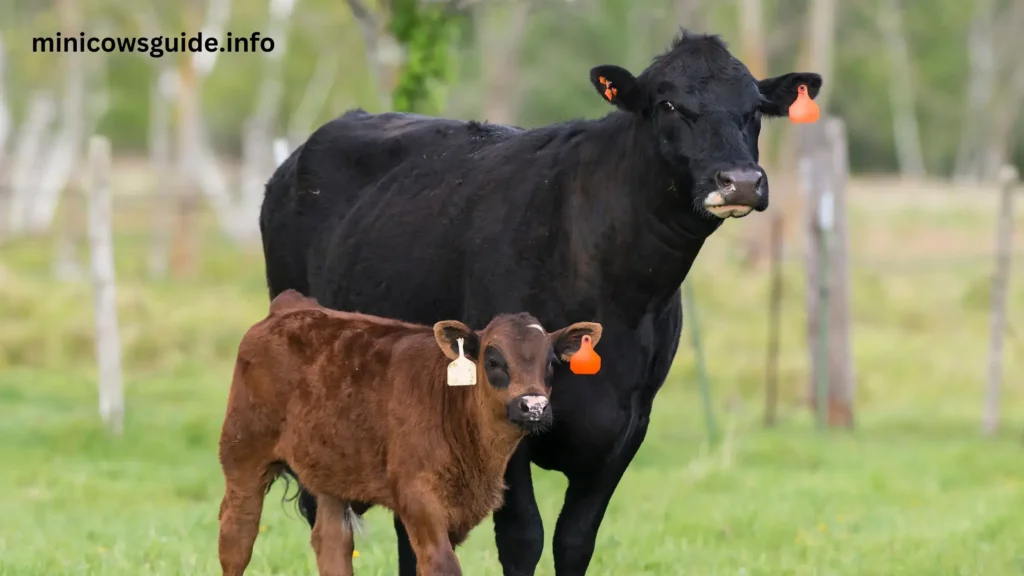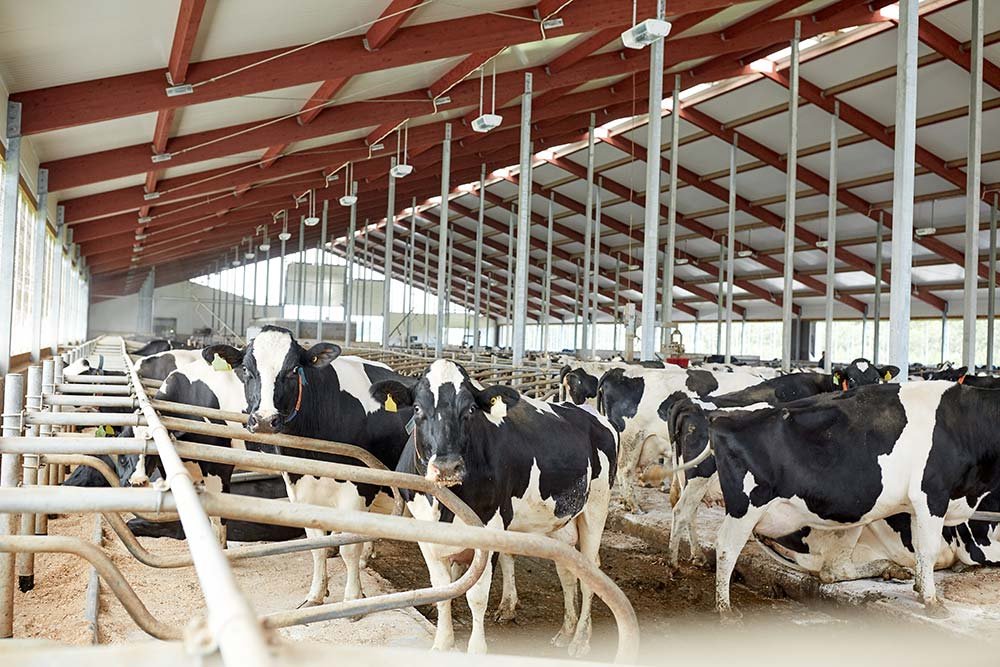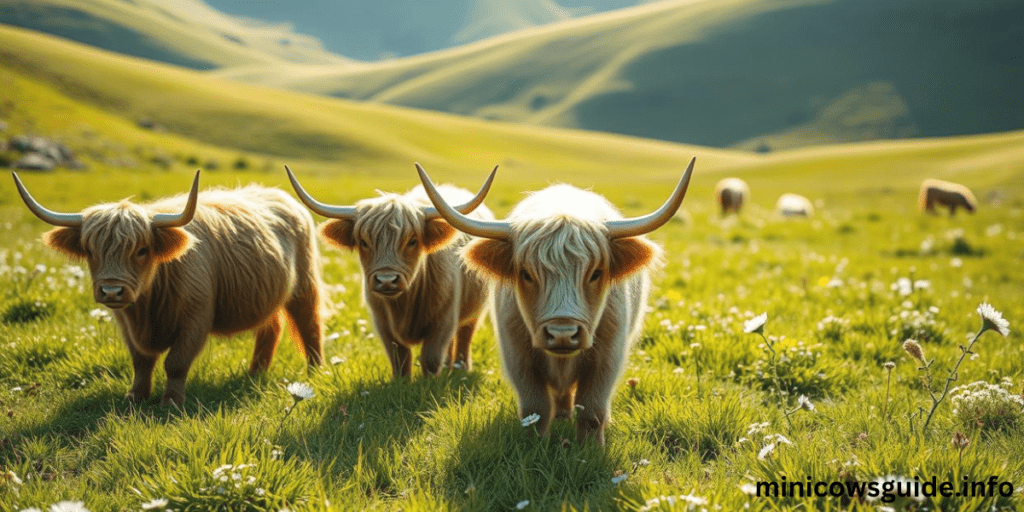
Mini cows are small-sized cattle breeds that are typically the result of selective breeding for genetic dwarfism. Genetic dwarfism involves intentionally selecting for animals with genes that result in smaller stature. This selective breeding process aims to produce cows with reduced size while maintaining other desirable traits such as temperament, milk production, or meat quality.
The purpose of understanding the reproductive cycle in mini cows is to facilitate effective breeding management and optimize reproductive outcomes in miniature cattle breeding programs. This understanding enables breeders to time mating periods accurately, identify reproductive stages, manage fertility cycles, and address any reproductive health issues specific to mini cows.
By comprehending their reproductive cycle, breeders can enhance genetic selection, improve breeding efficiency, and ultimately sustainably manage mini cow populations.To understand the intricacies of their breeding patterns and reproduction stages to effectively manage miniature cattle breeding programs.
Key aspects include the mini cow reproduction cycle, Mini cow breeding cycle, mini cow reproduction stages,miniature cattle mating period, mini cow reproductive process, and miniature cattle breeding techniques.
Similarities to Standard Cattle Reproduction

Mini cows exhibit similar reproductive functions to standard cattle, including estrous cycling, ovulation, and corpus luteum formation. Despite their smaller stature, mini cows maintain comparable reproduction physiology to standard cattle breeds.
The average oestrous cycle length in mini cows typically ranges from 20 to 21 days, resembling that of standard cattle breeds. This cycle involves key stages such as:
- Estrus (heat): During estrus, mini cows exhibit behavioral and physiological signs indicating their readiness to mate. This period is characterized by increased activity, mounting behavior, and receptivity to the bull.
- Ovulation: Ovulation marks the release of the mature egg from the ovary, typically occurring around 24 to 36 hours after the onset of estrus. It is a crucial event in the reproductive cycle, determining the fertile window for successful breeding.
- Corpus luteum formation: Following ovulation, the ruptured follicle transforms into the corpus luteum, a temporary endocrine structure that secretes progesterone. The corpus luteum plays a vital role in maintaining pregnancy by supporting the uterine environment for embryo implantation and early gestation.
Understanding these key stages in the reproductive cycle of mini cows is essential for effective breeding management and reproductive health monitoring in miniature cattle breeding programs.
Potential Variations in Mini Cows

Slight variations in the reproductive cycle of mini cows can occur due to breed differences or genetic factors. While the average estrous cycle length for mini cows typically falls within the range of 20 to 21 days, individual animals or specific breeds may exhibit slight deviations from this norm. Factors such as genetic background, breed characteristics, and environmental influences can contribute to these variations.
Certain miniature cattle breeds may have been selectively bred for specific traits, including reproductive characteristics. These breeding practices could potentially influence the timing and duration of the estrous cycle in mini cows. Additionally, genetic variations within a breed can lead to differences in reproductive physiology, affecting the length of the estrous cycle or the timing of ovulation.
Given these potential variations, breeders and farmers must consult with a veterinarian who has expertise in mini cow health and reproduction. Veterinarians can provide specific details and guidance tailored to individual animals or breeding programs. They can offer insights into the reproductive physiology of mini cows, help diagnose any reproductive disorders or issues, and provide recommendations for optimizing breeding management practices.
Consulting a veterinarian ensures that breeders have access to accurate information and professional advice regarding the reproductive cycle of mini cows. By working closely with a veterinarian, breeders can make informed decisions to support the reproductive health and breeding success of their miniature cattle herd.
Stages of the Mini Cow Reproduction Cycle

Stage 1: Estrus (Heat):
- Signs of receptivity include increased activity, restlessness, and vocalization.
- Other behavioral cues may include mounting other cows or standing to be mounted by other cows or a bull.
- This stage typically lasts for around 12 to 18 hours.
Stage 2: Ovulation:
- Ovulation occurs towards the end of the estrus period, approximately 24 to 36 hours after the onset of estrus.
- The mature egg is released from the ovary and is available for fertilization.
Stage 3: Corpus Luteum Formation:
- Following ovulation, the ruptured follicle transforms into the corpus luteum.
- The corpus luteum is a temporary endocrine structure that produces progesterone.
- Progesterone is essential for maintaining the uterine environment to support potential pregnancy.
Stage 4: Pregnancy or Return to Estrus:
- If fertilization occurs, the embryo implants in the uterus, and pregnancy begins.
- If no conception takes place, the corpus luteum regresses, progesterone levels decline, and the cow returns to estrus.
- The cycle then repeats, with the cow entering estrus approximately every 20 to 21 days until conception occurs.
- It’s important to note that the duration of each stage and the overall reproductive cycle can vary slightly between individual mini cows and may be influenced by factors such as breed, genetics, nutrition, and environmental conditions. Regular monitoring and consultation with a veterinarian can help ensure optimal reproductive health and breeding success in mini cows.
Mating Period in Mini Cows

Timing insemination or breeding within the estrous period is crucial for maximizing the chances of successful fertilization in mini cows. Typically, this window of opportunity occurs within 12 to 24 hours after the onset of heat signs, which indicates peak receptivity and ovulation nearing.
The importance of estrus detection methods cannot be overstated in ensuring optimal breeding opportunities. Reliable estrus detection allows breeders to identify the most fertile period within the estrous cycle accurately. Several methods can aid in estrus detection:
- Visual Observation: Observing behavioral changes associated with estrus, such as increased activity, mounting behavior, and standing to be mounted by other cows or a bull. Visual observation remains a fundamental method, but it requires attentive monitoring and skilled interpretation.
- Heat Detection Aids: Various aids, such as tail chalk or heat detection patches, can be used to identify mounting activity. These aids leave a visible mark when pressure is applied, indicating mounting attempts by other cows or a bull.
- Activity Monitors: Electronic devices can monitor cow activity, detecting increased movement associated with estrus. These devices can provide real-time data and alerts, enhancing efficiency in estrus detection. Keywords: activity monitoring devices, estrus activity monitors, electronic heat detection.
- Hormonal Assays: Blood or milk samples can be analyzed for hormonal changes associated with estrus, such as increased levels of estrogen. Hormonal assays offer a more objective method of estrus detection and can complement visual observation. Keywords: hormonal assays, hormone testing, estrogen levels.
By employing effective estrus detection methods, breeders can accurately pinpoint the optimal timing for insemination or breeding, maximizing the likelihood of conception. This approach minimizes the risk of missed breeding opportunities and enhances reproductive efficiency in mini cow breeding programs. Regular training and collaboration with a veterinarian can further refine estrus detection skills and improve breeding outcomes. Keywords: reproductive efficiency, breeding success, conception rate, veterinarian consultation.
Timeline of the Mini Cow Reproductive Process

Estrus Length:
- On average, the estrus period in mini cows typically lasts for about 12 to 18 hours.
- During this time, cows exhibit signs of receptivity, such as increased activity, mounting behavior, and standing to be mounted.
- It’s essential to note that the duration of estrus can vary between individual cows and may be influenced by factors such as genetics, breed, and environmental conditions.
Ovulation Timing:
- Ovulation generally occurs towards the end of the estrus period, approximately 24 to 36 hours after the onset of estrus.
- This timing allows for the mature egg released from the ovary to be available for fertilization during the peak fertility window.
- However, individual cows may experience variations in the timing of ovulation, which can impact the optimal timing for insemination or breeding.
- Breeders need to be aware of these average timeframes but also to recognize that individual cows may deviate from these norms. Factors such as age, health status, and reproductive history can influence the duration of estrus and the timing of ovulation in mini cows. Regular estrus monitoring and close observation of individual cow behaviour can help breeders identify and capitalize on the most fertile period for successful breeding. Additionally, consulting with a veterinarian can provide valuable insights into optimizing breeding strategies tailored to individual cows’ reproductive patterns and needs.
Conclusion
In conclusion, understanding the reproductive cycle in mini cows is essential for effective breeding management and optimizing reproductive outcomes in miniature cattle breeding programs. Mini cows, the result of selective breeding for genetic dwarfism, exhibit similar reproductive functions to standard cattle breeds. The average estrous cycle length in mini cows typically ranges from 20 to 21 days, with key stages including estrus, ovulation, and corpus luteum formation.
While mini cows generally follow a predictable reproductive cycle, variations may occur due to breed differences, genetics, or environmental influences. Consulting with a veterinarian experienced in mini cow health and reproduction is crucial for personalized breeding advice tailored to individual animals or breeding programs. Estrus detection methods play a vital role in timing insemination or breeding within the estrous period, maximizing the chances of successful fertilization.
By employing effective estrus detection methods and working closely with a veterinarian, breeders can accurately pinpoint optimal breeding opportunities, enhance genetic selection, and improve breeding efficiency in mini cow populations. Regular monitoring and consultation with a veterinarian ensure that breeders have access to accurate information and professional guidance to support the reproductive health and breeding success of their miniature cattle herds.





